

Newsletter/Nuusbrief 155
August/Augustus 2017
The July meeting took place on Monday 10th at the usual venue.
Michael Newcombe used the member’s slot to describe a visit that he, his wife and some friends had recently made to Zanzibar. His talk focused on Stone Town, its Old Fort (built entirely of coral), and the Sultans Palace, also known as the House of Wonders. Construction on the Old Fort was started by the Portuguese, but completed by the Sultanate of Oman at the end of the 17th century. The fort was besieged on at least two occasions in the 18th century during civil disturbances. In 1896 it was bombarded by the Royal Navy in the Anglo-Zanzibar War, the shortest in history, lasting 45 minutes. It has since been used as barracks, a prison, a railway workshop anda ladies club. It is currently used as an amphitheatre where it hosts the annual Zanzibar International Film Festival. In front of the palace along the sea wall are six muzzle-loading cannons on display.
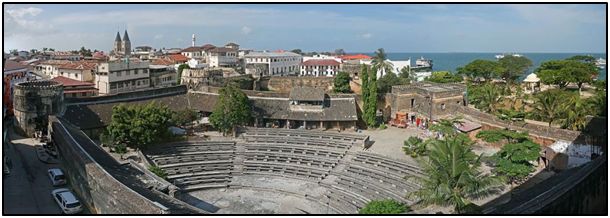
The Old Fort in Zanzibar with the amphitheatre built inside it.
Photo: Michael Newcombe
The curtain raiser,titled Historical sites on the R63, was an illustrated talk on places of military historical interest by Peter Duffel-Canham on a recent trip which he and Karen had undertaken in the Karoo west of Graaff-Reinet.
The first stop was at Murraysburg, where the museum has unfortunately closed, but they were able to get some insight into the town during the Anglo-Boer War through local historian Alida Vermeulen. Murraysburg was unable to raise a Town Guard, so was not garrisoned by British troops, the result being that it was frequently raided by Boer commandos. The most influential was Gideon Scheepers, operating in the Camdeboo from March 1901. He burnt down privately owned and Government buildings and farms in Murraysburg on 6th and 8th July 1901, and robbed the Standard Bank. Among the farms burnt was Vleiplaas, owned by the Secretary for Agriculture in the Cape Government. Scheepers issued proclamations to the local magistrate and became the de facto political authority in the area.
A night stop was made on the farm Badfontein, north of the town on what was the main route to Richmond. Here Wynand Malan was assisted with supplies by the young widowed owner of the farm which later became a supply and rest depot for the British forces. One of the English officers fell in love with the widow, but she did not share his affections, so he sent her to an internment camp in Richmond.
The museum in Victoria West has two displays of military interest, firstly that of Group Captain Petrus Hendrik Hugo, DSO, DFC and two bars, a Battle of Britain pilot who at age 24 became the youngest Group Captain (equivalent to an army colonel)in the Royal Air Force. There is a photographic display of his medals and also a German parachute and machine gun that he recovered from the wreck of an aircraft shot down near his base in Holland. The second display case was on the Anglo-Boer War. There are photographs of Judge Henry Hugo, who was mortally wounded in a clash at Oorlogsfontein in the Victoria West district and died on 21st February 1902. Also displayed are items from the Victoria West District Scouts, and the start of the blockhouse line west to the coast.
A night was spent on the farm Melton Wold which was frequently raided by Boer commandos for their sheep, cattle and horses, so much so that the farm had no owner until 1910. They then visited the Old Truck Museum in Loxton which has an interesting display of both military and civilian vehicles, among them World War II and Korean War ambulances, an American half-track, Ford and Chevrolet trucks and other vehicles in various stages of restoration. All in all, the R63 route proved very interesting with varied places of military historical interest along it.
The main lecture,by Malcolm Kinghorn focused on Human intelligence in counter-terrorism operations, specifically the use of captured terrorists as an intelligence source.
In this context, intelligence is the gathering of information on what hostile forces or individuals might be planning, and terrorism is the use of violence or the threat of violence to inculcate fear to coerce or intimidate governments or societies in pursuit of political, religious or ideological objectives.
An issue regarding the detention of captured terrorists is when, and under what circumstances, individuals may be detained. These circumstances differ depending on whether terrorism is regarded as an act of war or a criminal act. If one accepts the war paradigm, the Law of Armed Conflict applies and the primary resource in countering terrorism is the military. In the crime paradigm, Criminal Law applies and the primary resource is the criminal justice system. In the war paradigm, the purpose of detention is to remove individuals from the battlefield until the end of hostilities or, in counter terrorism operations, to protect society from dangerous individuals. In the crime paradigm, the purpose of detention is prosecutionto determine if an individual has violated the law, and impose appropriate punishment if found guilty.
Benefits of the Law of Armed Conflict detention include that detention without probable cause of illegal activity and intelligence collection without involvement of lawyers is possible and there is no risk of losing a trial. Problems with war paradigm detention include the possibility that people may be wrongfully detained, for example, the so-called Tipton 3, and the slow process of challenging the legitimacy of detention, for example, the case of Lakhdar Boumedienne, who was detained from 2002 to 2009 before being released by US Supreme Court. Long term detention damages the human rights credibility of the detaining state and detention facilities become symbols of repression. Foreign forces may not transfer prisoners, which undermines international cooperation against terrorism. Hunger strikes and medical issues damage public relations and raise ethical questions. Detention under the war paradigm in counter terrorism operations also damages a country’s international prestige.
Advantages of the criminal justice system include a long history of successful prosecutions, well established case history, a wide variety of criminal statutes, and that it is perceived as normal justice. Using the criminal justice system in counter-terrorism is subject to international law, including the International Convention on Civil and Political Rights and the European Convention on Human Rights. A conundrum in this respect is whether there can be normal justice in the abnormal circumstances created by terrorism. One of the problems with using the criminal justice system in counter-terrorism is that courts become potential terrorist targets.
Collecting human intelligence implies interrogation of captured terrorists. This raises the issue of whether torture, which is illegal in terms of international law, may be used to gain information. Torture. The UN Convention Against Torture defines torture as “any act by which pain or suffering, whether mental or physical, is intentionally inflicted on a person.”An ethical dilemma is the ‘ticking time-bomb scenario’, namely suppose that a person with knowledge of an imminent terrorist attack that will kill many people, is in the hands of the authorities and will disclose the information needed to prevent the attack only if tortured. Should torture be used to force disclosure of that information? In other words, does saving many lives justify violation ofthe human rights of a few? Some countries have set limits to the discomfort which may be inflicted during interrogation.
Factors used in evaluating information extracted during interrogation are whether the information gained was accurate, timely and actionable, did the value of the accurate information outweigh the distraction of any inaccurate information obtained, could the same information have been obtained through other means and were opportunities to obtain useful information lost by the failure to use other means.
The talk was followed by a lively discussion.
Future meetings and field trips/ Toekomstige byeenkoms en uitstappe
The next SAMHSEC meeting will be on 14th August 2017 at 19h30 at the Eastern Cape Veteran Car Club in Conyngham Road, Port Elizabeth. The members’ slot will be filled by Ian Pringle who will talk on The Anglo-Boer War weekend at Matjiesfontein. The curtain raiser will be by Andre Crozier on The fall of Tobruk, 1942, and the main lecture, titled Harold Fehrson Sampson, will be presented by Stephen Bowker.
The field trip to sites of the Ninth Frontier War, East London and King William’s Town will take place from Friday 4th to Sunday 6th August. Details have been circulated separately.
Anyone still wishing to attend can contact Malcolm Kinghorn at either culturev@lantic.net or 082 331 6223.
Arrangements for SAMHSEC to visit the SAAF Museum in Port Elizabeth on 18th November 2017 are already in hand.
World War I Centenary Years / Eerste Wêreldoorlog Eeufeesjare
Major engagements in August 2017
After the costly stalemate of the 10th Battle of Isonzo in May 1917, the Italian High Command set about planning the next attempt to break through the Austro-Hungarian lines. Known as the 11th Battle of Isonzo, it was the final attempt by the Italians and their Chief of Staff, Cadorno, to break the deadlock along the Isonzo River, and as such, the focus was once again to be the Italian bridgehead at Gorizia (see Newsletter 143). Initiated on 19th August, this was intended to be achieved with 51 divisions and over 5000 guns.
The Italian advance initially made significant gains, but outran their own artillery, supply lines, and command structures which, had this not occurred, might have resulted in the planned breakthrough. The Austro-Hungarian army however held and after, once again, massive Italian casualties, the attack was abandoned on 12th September with little to show for it.
The 12th and final Battle of Isonzo, also known as the Battle of Caporetto, was to take place in October 1917, and was an entirely different story.
An interesting naval engagement, known to the British as The Action of 15th August, took place in the North Sea between two armed trawlers and a U-boat. The trawlers were generally armed with a 3-pdror 6-pdr gun asunrestricted submarine warfare around Britain had again been resumed by Germany. The trawlerswerecrewed by regular fishermen,but were commanded by men of the Royal Navy Reserve. Left to continue fishing to supplement Britain’s critical food supplies, they were to act on their own initiative if attacked. The two trawlers on this occasion were the Nelson and the Ethel & Millie. The U-boat was possibly U-63.
At 14h45, the trawler Nelson came under fire from a U-boat which had surfaced about five kilometres away. While returning fire and racing towards the U-boat, the Nelson was repeatedly hit and began to sink, the crew taking to her lifeboat. Although mortally wounded, her commander Thomas Crisp remained in command throughout the action, declining to take up space in the lifeboat and going down with his ship. The Ethel & Millie had by this time also moved in to engage the U-boat, but she too was hit and began to sink, her crew abandoning ship. The Nelson’s crew observed the men being taken from their lifeboat and being lined up on the U-boats deck, but were unable to see anymore as the view became obscured by mist. Nelson’s crew were rescued two days later but Ethel & Millie’s crew were never seen or heard of again. They were neither reported as POWs nor returned to the UK at the end of the war. Their fate remains unknown to this day. U-63 was herself torpedoed by HM Submarine E52 on 1st November 1917. There was only one survivor of her 27 crew, who was unable to throw any light on the matter. Crisp was awarded a posthumous VC for the ‘seamanlike and brave manner’ in which he had conducted himself.
Korvettenkapitän Georg Ritter von Trapp
While on the topic of U-boats, the naval career and life of Korvettenkapitän (equivalent to Lieutenant-Commander) Georg Ritter von Trapp, an Austro-Hungarian naval officer is of interest. Born in 1880 into a naval family (his father was a Fregattenkapitän)he was a relatively successful U-boat commander during the First World War and, as far as can be ascertained, the top scorer in the Kaiserliche und Königsliche Kriegsmarine (Imperial and Royal War Navy of the Austro-Hungarian Empire)*. Under his command the U-5 and U-14 sank 13 Allied ships totalling some 46 669 gross tons. This, and other feats such as his conduct during the Boxer Uprising, earned him numerous decorations and awards including the prestigious Knight’s Cross of the Military Order of Maria Theresa.
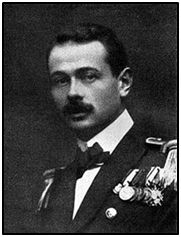
Korvettenkapitän Georg Ritter von Trapp c1917
After the war he settled in Austria where, during the Great Depression the von Trapp family found themselves in financially straightened circumstance. To help make ends meet Georg’s wife Maria trained their 10 children to sing as a way of supplementing the family income. Maria’s record of this time, The Story of the Trapp Family Singers became the inspiration for the highly successful musical and film, The Sound of Music. Leading up to and after the 1938 Anschluss the family came under increasing harassment from the Nazis when Georg, a fervent opponent of Nazism, refused to serve in the Kriegmarine. Fearing arrest and deportation, he and the family fled to Italy and, later, to the United States where he died in 1947. Two of his sons served in the American army during World War II.
* The most successful submarine commander in history was the German Lothar von Arnauld de la Perière (1886–1941) who sank 194 ships (including two warships), totalling 453 716 gross tons in only 15 patrols. He was killed in 1941 when, with the rank of Vizeadmiral, the aircraft in which he was a passenger, crashed on take-off.
SMS Königsberg
July 15th was the 102nd anniversary of the destruction of the German light Cruiser SMS Königsberg, in the Rufiji Delta in present day Tanzania. Although a relatively minor operation, it was an early example of co-operation between aircraft and warships. In this case the shallow draft monitors HMS Severn and Mersey were able to successfully shell a target they could not see, but to which they were guided by spotter aircraft. The incident also left the Royal Navy in unchallenged control of the Indian Ocean. There was a significant South African contribution in the provision and operation of the aircraft.
For further details see SAMHSEC Newsletter 89 (February 2012)
Websites of interest/Webwerwe van belang
Historic aircraft
Luftwaffe ace, Hugo Broch, 95, flies in Spitfire
BBC News28th June 2017
75 year old Messerschmitt BF109 E4 flies again
List of surviving Messerschmitt Bf 109s
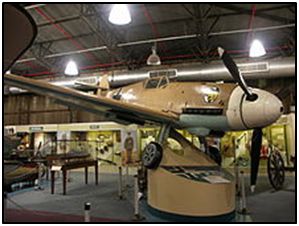
The Messerschmitt Bf 109 F-2 (Tropical) at the
Ditsong National Museum of Military History in Saxonwold.
This aircraft was captured at Marble Arch in the Libyan Desert in 1942.
It had served with III/JG 27, was painted in the desert colour scheme
and fitted with a special air filter to protect the engines from sand and dust.
Photo: Wikipedia
World War I
The work of military nurses at Passchendaele
Christine Hallett History Today 67 (7) July 2017
World War II
Britain’s entry into the Second World War ushered in a wave of anti-German sentiment, creating strange bedfellows across the political spectrum.
Kirk Graham History Today 5th July 2017
The Best Tank Of WWII: The Panther
History 15th December 2016
Resource materials of military historical interest/
Bronmaterieel van krygsgeskiedkundigebelang
NEW BOOKS
Wright Damien 2017 Churchill’s secret war with Lenin: British and Commonwealth intervention in the Russian Civil War 1918-1920 Solihull Helion& Company
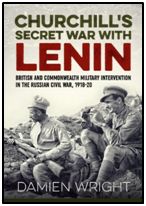
The following summary is reproduced with the permission of the publishers:
After three years of great loss and suffering on the Eastern Front, Imperial Russia was in crisis and on the verge of revolution. In November 1917, Lenin's Bolsheviks (later known as 'Soviets') seized power, signed a peace treaty with the Central Powers and brutally murdered Tsar Nicholas (British King George's first cousin) and his children so there could be no return to the old order. As Russia fractured into loyalist 'White' and revolutionary 'Red' factions, the British government became increasingly drawn into the escalating Russian Civil War after hundreds of thousands of German troops transferred from the Eastern Front to France were used in the 1918 'Spring Offensive' which threatened Paris.
What began with the landing of a small number of Royal Marines at Murmansk in March 1918 to protect Allied-donated war stores quickly escalated with the British government actively pursuing an undeclared war against the Bolsheviks on a number of fronts in support of British trained and equipped 'White Russian' Allies. At the height of British military intervention in mid-1919, British troops were fighting the Soviets far into the Russian interior in the Baltic, North Russia, Siberia, Caspian and Crimea simultaneously. The full range of weapons in the British arsenal were deployed including the most modern aircraft, tanks and even poison gas. British forces were also drawn into peripheral conflicts against 'White' Finnish troops in North Russia and the German 'Iron Division' in the Baltic.
It remains a little known fact that the last British troops killed by the German Army in the First World War were killed in the Baltic in late 1919, nor that the last Canadian and Australian soldiers to die in the First World War suffered their fate in North Russia in 1919 many months after the Armistice. Despite the award of five Victoria Crosses (including one posthumous) and the loss of hundreds of British and Commonwealth soldiers, sailors and airmen, most of whom remain buried in Russia, the campaign remains virtually unknown in Britain today.
After withdrawal of all British forces in mid-1920, the British government attempted to cover up its military involvement in Russia by classifying all official documents. By the time files relating to the campaign were quietly released decades later there was little public interest. Few people in Britain today know that their nation ever fought a war against the Soviet Union. The culmination of more than 15 years of painstaking and exhaustive research with access to many previously classified official documents, unpublished diaries, manuscripts and personal accounts, author Damien Wright has written the first comprehensive campaign history of British and Commonwealth military intervention in the Russian Civil War 1918-20.
It sounds fascinating and of course, a number of South Africans were also involved in this debacle. For other books on military history published by Helion& Company, see
ONLINE RESOURCES
An interesting overview of the Royal Navy can be found at: Naval analysis: Royal Navy
A miscellaneous selection of military historical items, compiled by Jinny McCormick for War History Online can be found at:
http://www.warhistoryonline.com/author/jinny
BLOGS
A broad overview of the East Cape Frontier Wars (1779-1878), prior to going on the August Field Trip can be found at:
Members are invited to send in to the scribes, short reviews of, or comments on, books, DVDs or any other interesting resources they have come across, as well as news on individual member’s activities. In this Newsletter, there have been contributions by Richard Tomlinson, Franco Cilliers, Malcolm Kinghorn, Barry Irwin, Michael Irwin, Fred Nel, and Peter Duffel-Canham.
Chairman: Malcolm Kinghorn: culturev@lantic.net
Secretary: Franco Cilliers: Cilliers.franco@gmail.com
Scribes (Newsletter): Anne and Pat Irwin: p.irwin@ru.ac.za
Society’s Website: http://samilitaryhistory.org
TAILPIECE:
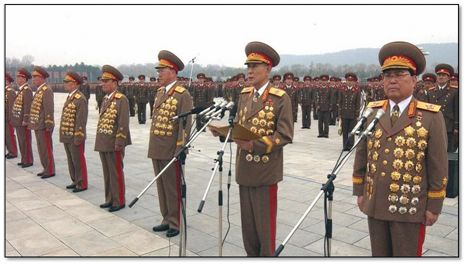
A bevy of North Korean generals. It has been suggested that they could be defeated by a giant magnet.